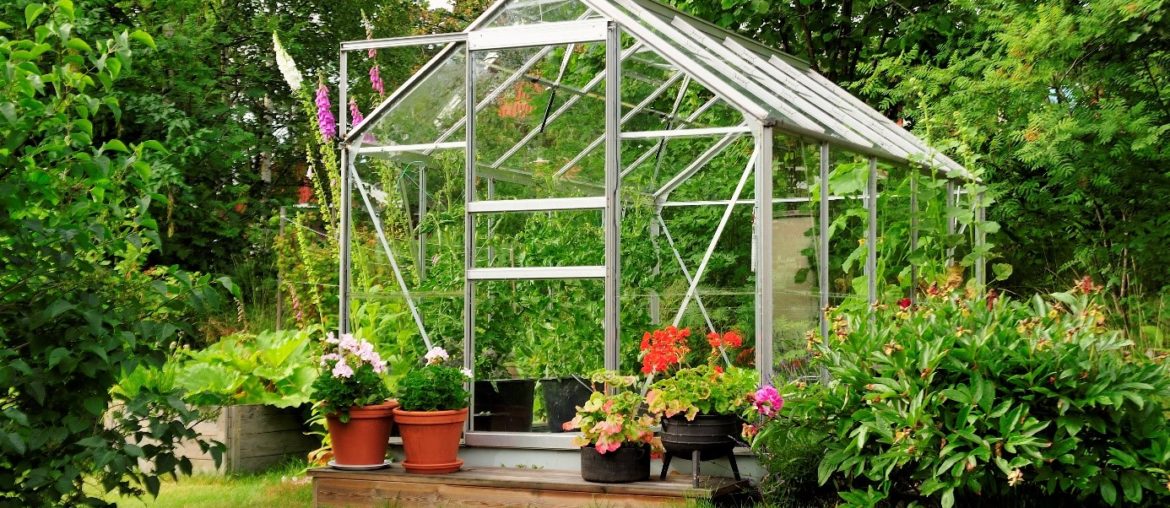Your plants, you care, you pamper them so that your garden is pleasant … So, seeing your efforts ruined during the winter because of the frost would be terrible for you! The most fragile plants need a protective cocoon. The garden greenhouse is ideal for planting, but also for sheltering plants sensitive to cold. Here are some tips for setting up your garden greenhouse!
What dimensions for your garden greenhouse?
The dimensions depend on the number of plants you are going to store and the crops you want to create. Avoid seeing too small!
The width of a greenhouse : it is preferable to plan 3 meters at least. With a central aisle and two side aisles, you move freely in this space.
The length : We generally recommend a length of at least 5 meters, or even 6 meters.
The height : it will be at least 2.20 meters at the ridge, 3 meters are even better. This will save you from having to work by breaking your back. Despite the slope of the roof, it is easier to cultivate directly on the ground on the side wall side.
Administrative formalities related to the dimensions of your greenhouse : you must apply for a work permit if your greenhouse has an area of less than 20 m². For a greenhouse of 20 m² or more, a building permit is required. Think about it!
To read also: Can we build a garden shed without permission?
What equipment for your garden greenhouse?
The water :
It is certainly, like light and temperature, the essential element of the garden greenhouse. To continue to take care of your plants, watering and humidity are necessary. The easiest way is to install a large water tank and connect it to gutter or faucet. This water pan offers various advantages:
- You have water on hand to irrigate without needing to bring a large hose;
- You increase the humidity level in this winter garden, and your plants appreciate it;
- It also acts as a natural radiator by accumulating heat during the day to release it during the night.
Outside and near the greenhouse, place a rainwater collector. Then, connect a microporous hose that can distribute water to all your plants.
Lighting:
If you like to work in your greenhouse in the evening or early in the morning, in winter, lighting is essential. The horticultural lamps sold in DIY stores or garden centers are obviously great. You can however be satisfied with a dynamo or battery-powered camping light. They are sufficient to illuminate the path when you pass or to finish your tomato sowing.
Electricity:
Obviously, without electricity, you will have neither heating nor lighting nor programming of shading and ventilation. If you decide to bring it to your greenhouse, remember that the installation must be waterproof and earthed.
Heating:
It ensures the frost protection of the greenhouse during the winter. More generally, it is useful for regulating the interior temperature, especially when it is equipped with a thermostat. The radiant electric heater is an effective solution if it is designed for humid environments. The oil or gas heating is another option.
Shading:
In periods of strong sunshine and in the event of extreme heat, shade is necessary!
The easiest way is to think about this problem upstream and equip your ceiling with a shade cloth upon installation. It is also possible to have sails on the ceiling and along the walls. You have to leave a gap between the wall and the wall to let the air pass. The goal is to reduce the heat and protect your plants from direct sunlight which burns leaves, for example.
You don’t have shade cloth? Don’t panic, the vine is also a clever and efficient idea. You plant it a few centimeters from the glass wall. It thus provides natural shade from the start of spring and it occupies the generally unexploited sub-slope space.
Aeration:
So that your greenhouse does not become an oven in summer, good ventilation is essential. It also limits the formation of condensation on the windows. The opening panels on the sides and on the roof are the key to sufficient air passage!
Warning : if your greenhouse is made of tempered glass, you must opt for an automatic roof opening. This very ingenious process does not need to be supplied with electricity. The window opens automatically by means of a piston as soon as it is too hot.

What equipment to work in your greenhouse?
Seedling shelves and shelves:
They can be made of wood or aluminum. Seedling shelves are rather stainless steel to facilitate cleaning and prevent rust.
They are placed on the uprights of the greenhouse and the first and Approx. 80 cm from the ground for easier work.
They are removable and thus offer more modularity : according to your needs, you move them as you wish.
Install your shelves on several floors. You store large pots at the bottom and cold-sensitive plants, seed boxes and cuttings, high.
The potting table:
It is like the work plan of your garden greenhouse! As in the kitchen, this table must have comfortable dimensions to carry out your plantings, your repotting and your sowing in the best conditions. In a fairly large greenhouse (15 to 20 m²), opt for a table of at least 100 by 60 cm, with two trays and rims high enough to hold the soil. On the lower shelf, you store your tools and pots.
Place it near the entrance to avoid too long round trips from the garden.
Keep a shovel and brush nearby to clean your table. The cleaner the table, the more disease you prevent your plants from.
Suspended guardians:
They are practical for raising certain vegetables, but also for optimizing the height of your greenhouse. You hang them from the ceiling with string.
The central aisle:
With some concrete slabs, improvise a central aisle that is easily accessible to move easily from your table to the shelves. Consider the width of the slabs which should be at least the same as the wheels of a wheelbarrow to simplify harvesting and working on the ground.
Ramps on the ground:
We are talking here about inclined plane facilitating the arrival of the wheelbarrow in the greenhouse. This prevents you from being stuck with a heavily loaded wheelbarrow that you are unable to handle. It is enough to put a board on a tube to obtain this inclined plane.
Aromatic plants around the greenhouse:
To prevent stones from being thrown on the glass wall of the greenhouse, plant aromatic plants, they remain low and are protective despite everything.
Read also :







